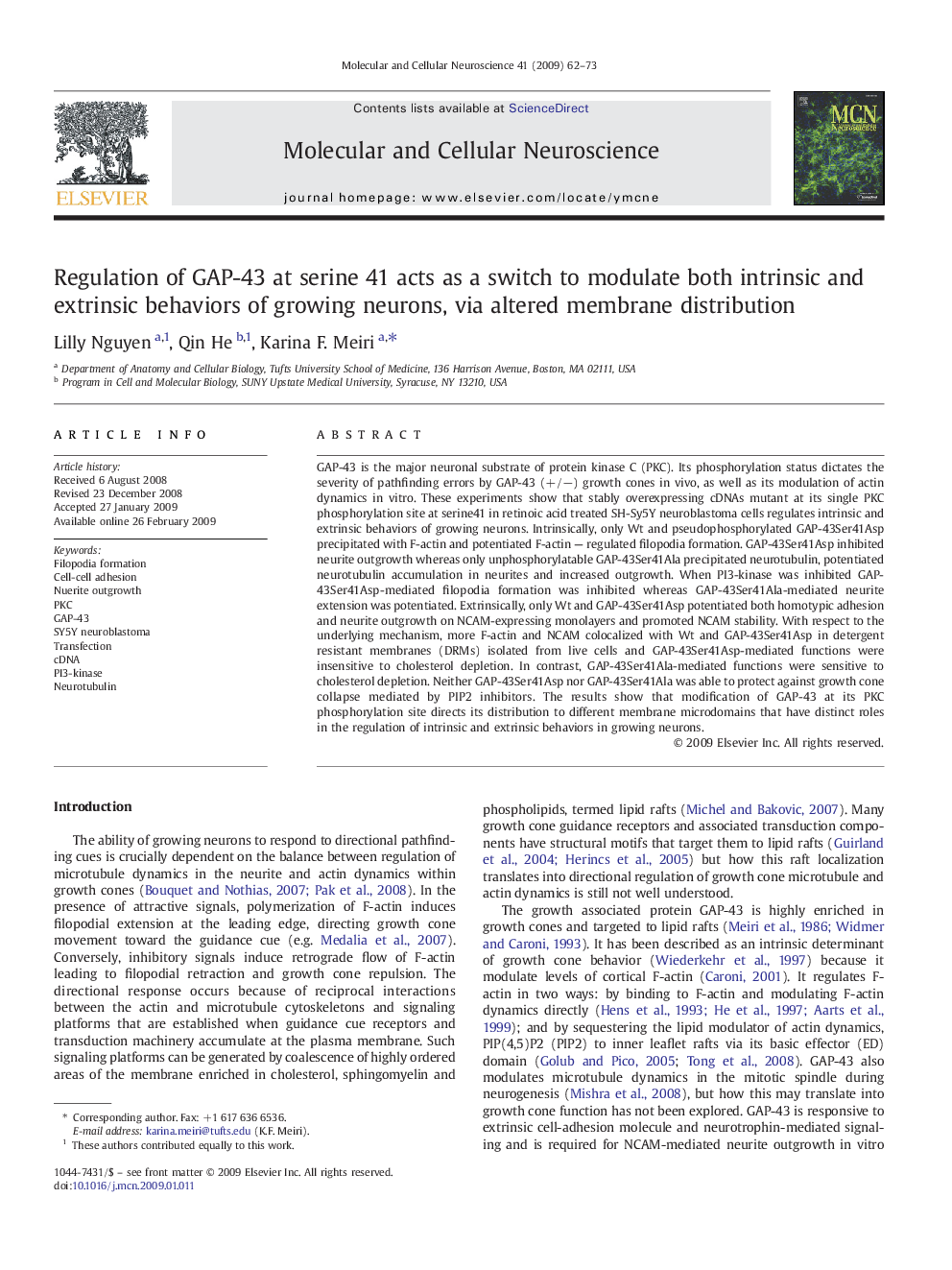| Article ID | Journal | Published Year | Pages | File Type |
|---|---|---|---|---|
| 2198817 | Molecular and Cellular Neuroscience | 2009 | 12 Pages |
GAP-43 is the major neuronal substrate of protein kinase C (PKC). Its phosphorylation status dictates the severity of pathfinding errors by GAP-43 (+/−) growth cones in vivo, as well as its modulation of actin dynamics in vitro. These experiments show that stably overexpressing cDNAs mutant at its single PKC phosphorylation site at serine41 in retinoic acid treated SH-Sy5Y neuroblastoma cells regulates intrinsic and extrinsic behaviors of growing neurons. Intrinsically, only Wt and pseudophosphorylated GAP-43Ser41Asp precipitated with F-actin and potentiated F-actin — regulated filopodia formation. GAP-43Ser41Asp inhibited neurite outgrowth whereas only unphosphorylatable GAP-43Ser41Ala precipitated neurotubulin, potentiated neurotubulin accumulation in neurites and increased outgrowth. When PI3-kinase was inhibited GAP-43Ser41Asp-mediated filopodia formation was inhibited whereas GAP-43Ser41Ala-mediated neurite extension was potentiated. Extrinsically, only Wt and GAP-43Ser41Asp potentiated both homotypic adhesion and neurite outgrowth on NCAM-expressing monolayers and promoted NCAM stability. With respect to the underlying mechanism, more F-actin and NCAM colocalized with Wt and GAP-43Ser41Asp in detergent resistant membranes (DRMs) isolated from live cells and GAP-43Ser41Asp-mediated functions were insensitive to cholesterol depletion. In contrast, GAP-43Ser41Ala-mediated functions were sensitive to cholesterol depletion. Neither GAP-43Ser41Asp nor GAP-43Ser41Ala was able to protect against growth cone collapse mediated by PIP2 inhibitors. The results show that modification of GAP-43 at its PKC phosphorylation site directs its distribution to different membrane microdomains that have distinct roles in the regulation of intrinsic and extrinsic behaviors in growing neurons.
